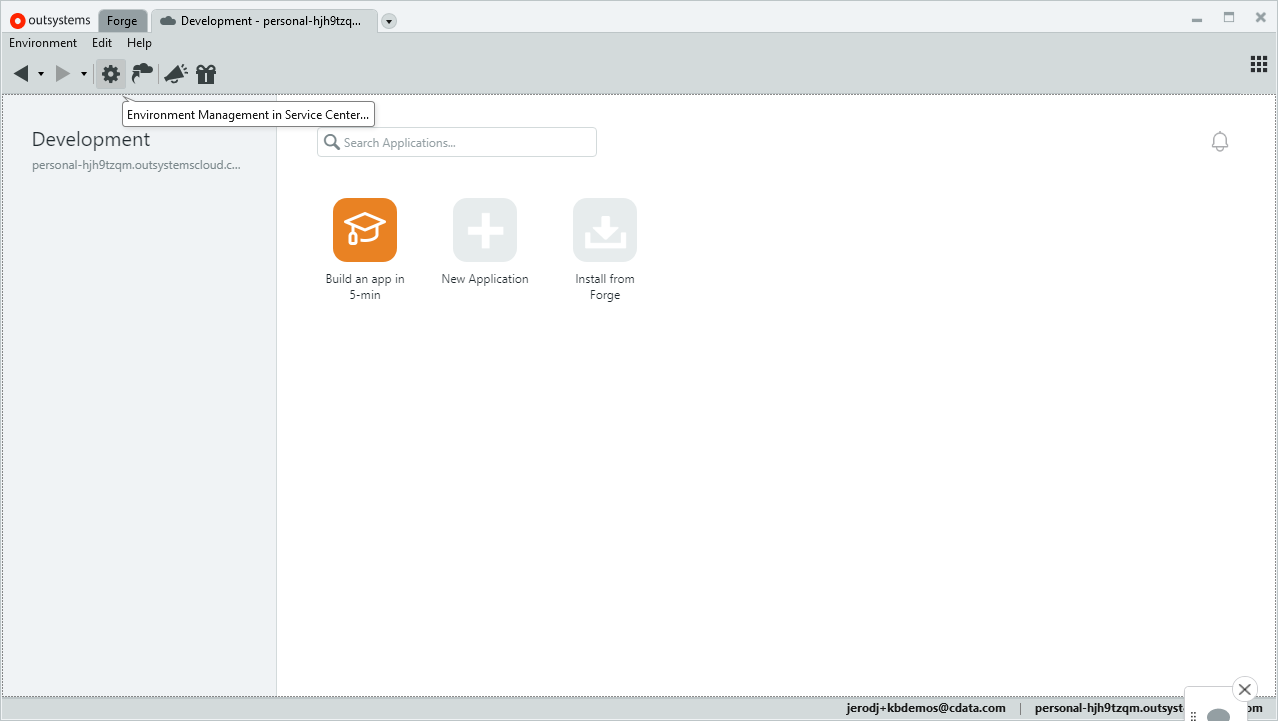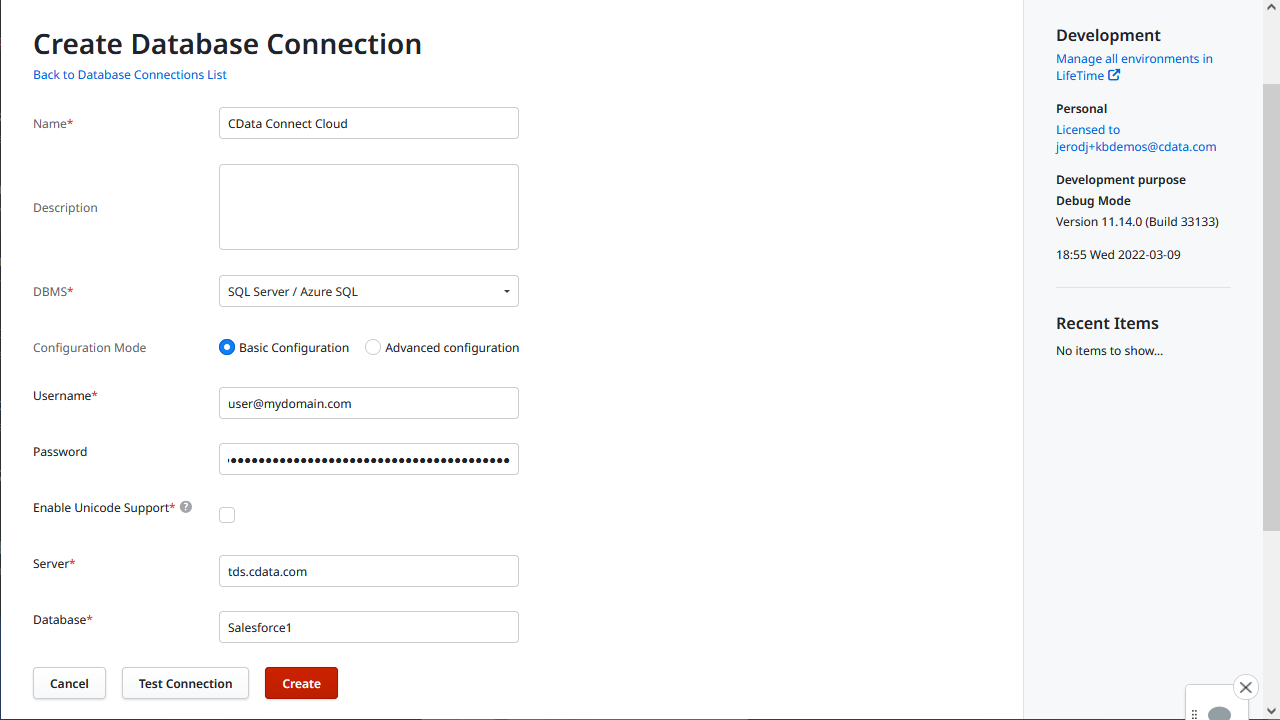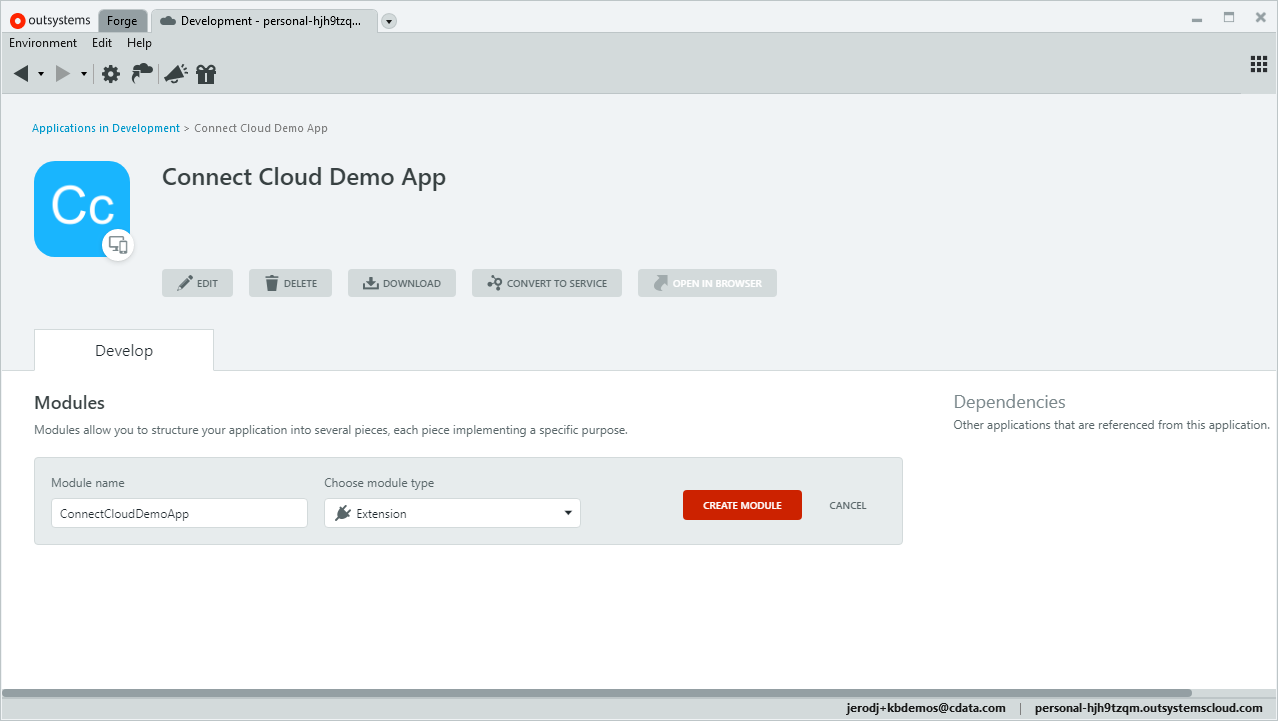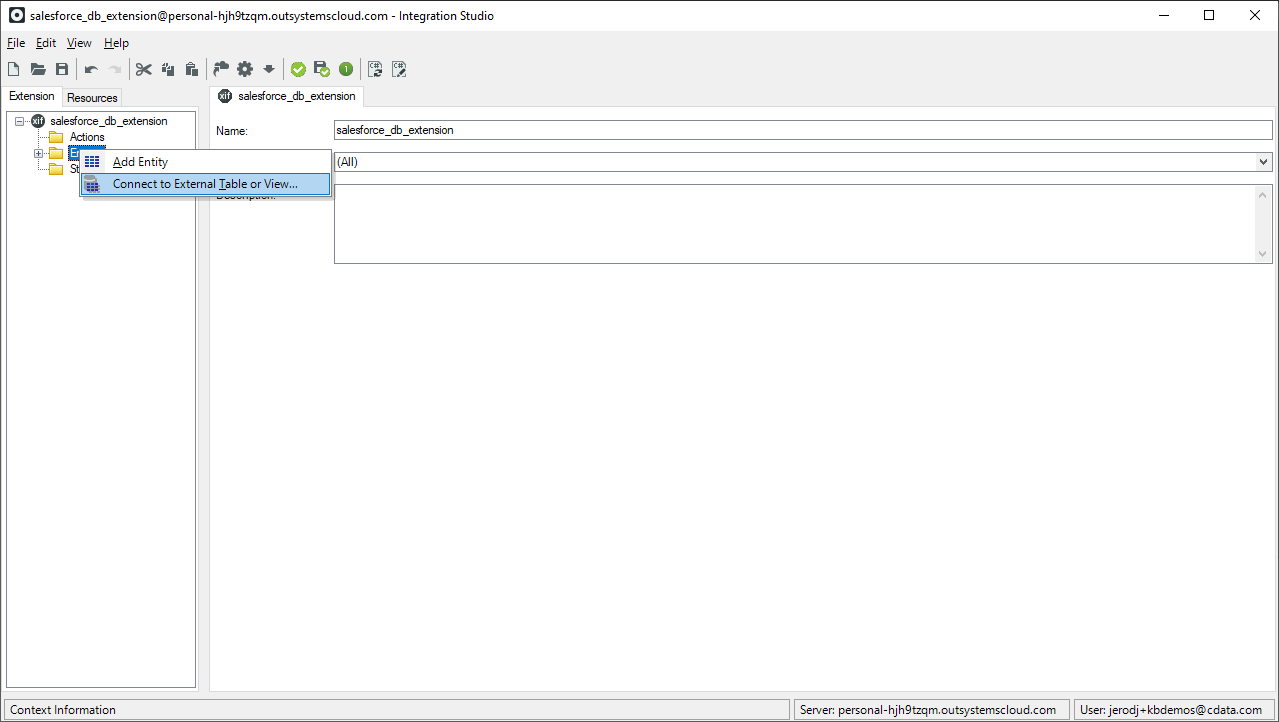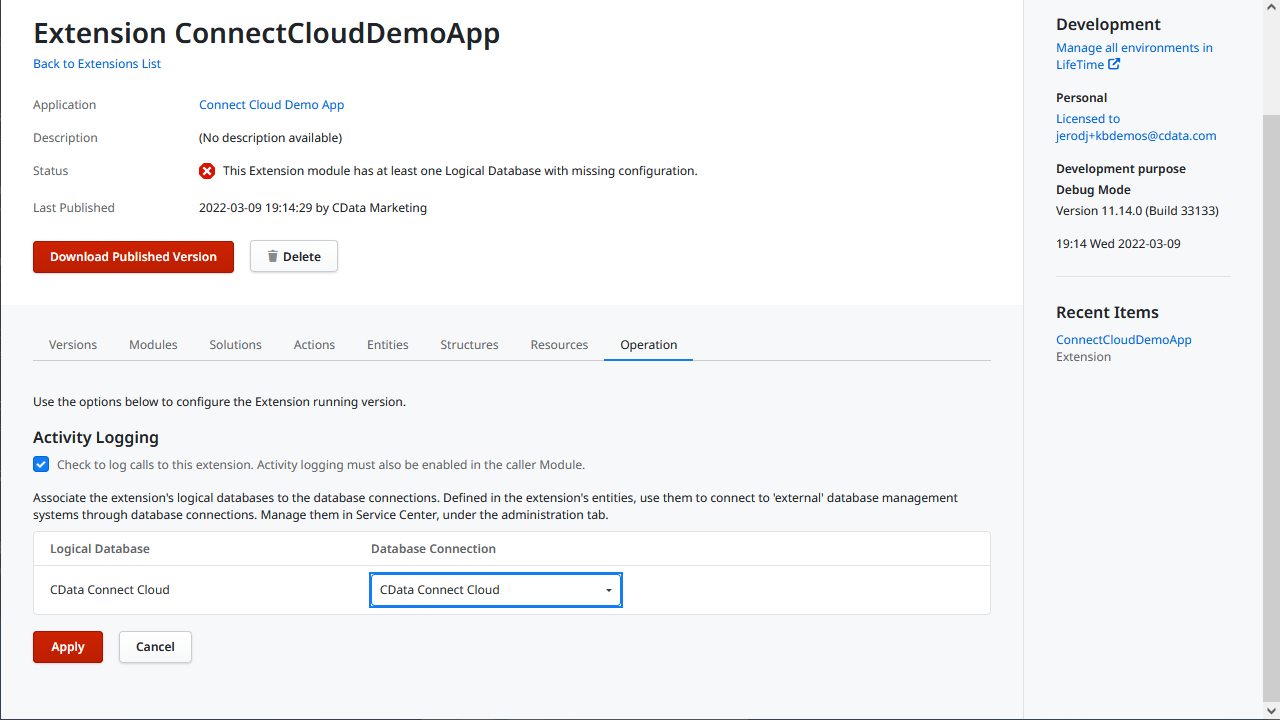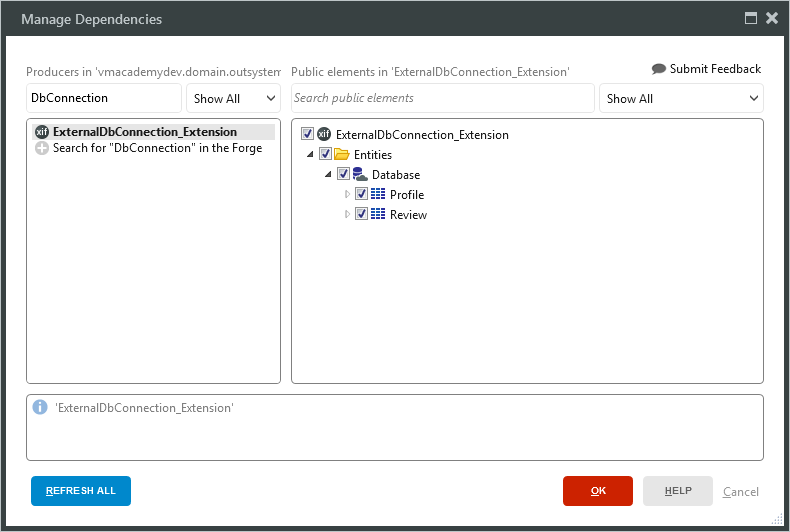Discover how a bimodal integration strategy can address the major data management challenges facing your organization today.
Get the Report →Create Amazon Athena-Connected Enterprise Applications in OutSystems
Use CData Connect Cloud to connect to Amazon Athena Data from OutSystems and build custom enterprise apps using live Amazon Athena data.
OutSystems is a low-code platform which provides the tools for companies to developer, deploy, and manage omnichannel enterprise applications. When paired with CData Connect Cloud, you get instant, cloud-to-cloud access to Amazon Athena data for business applications. This article shows how to create a virtual database for Amazon Athena in Connect Cloud and build a simple app from Amazon Athena data in OutSystems.
The CData Connect Cloud provides a pure cloud-to-cloud interface for Amazon Athena, allowing you to build reports from live Amazon Athena data in OutSystems — without replicating the data to a natively supported database. As you create applications to work with data, OutSystems generates SQL queries to gather data. Using optimized data processing out of the box, CData Connect Cloud pushes all supported SQL operations (filters, JOINs, etc.) directly to Amazon Athena, leveraging server-side processing to quickly return the requested Amazon Athena data.
Configure Amazon Athena Connectivity for OutSystems
Connectivity to Amazon Athena from OutSystems is made possible through CData Connect Cloud. To work with Amazon Athena data from OutSystems, we start by creating and configuring a Amazon Athena connection.
- Log into Connect Cloud, click Connections and click Add Connection
![Adding a Connection]()
- Select "Amazon Athena" from the Add Connection panel
![Selecting a data source]()
-
Enter the necessary authentication properties to connect to Amazon Athena.
Authenticating to Amazon Athena
To authorize Amazon Athena requests, provide the credentials for an administrator account or for an IAM user with custom permissions: Set AccessKey to the access key Id. Set SecretKey to the secret access key.
Note: Though you can connect as the AWS account administrator, it is recommended to use IAM user credentials to access AWS services.
Obtaining the Access Key
To obtain the credentials for an IAM user, follow the steps below:
- Sign into the IAM console.
- In the navigation pane, select Users.
- To create or manage the access keys for a user, select the user and then select the Security Credentials tab.
To obtain the credentials for your AWS root account, follow the steps below:
- Sign into the AWS Management console with the credentials for your root account.
- Select your account name or number and select My Security Credentials in the menu that is displayed.
- Click Continue to Security Credentials and expand the Access Keys section to manage or create root account access keys.
Authenticating from an EC2 Instance
If you are using the CData Data Provider for Amazon Athena 2018 from an EC2 Instance and have an IAM Role assigned to the instance, you can use the IAM Role to authenticate. To do so, set UseEC2Roles to true and leave AccessKey and SecretKey empty. The CData Data Provider for Amazon Athena 2018 will automatically obtain your IAM Role credentials and authenticate with them.
Authenticating as an AWS Role
In many situations it may be preferable to use an IAM role for authentication instead of the direct security credentials of an AWS root user. An AWS role may be used instead by specifying the RoleARN. This will cause the CData Data Provider for Amazon Athena 2018 to attempt to retrieve credentials for the specified role. If you are connecting to AWS (instead of already being connected such as on an EC2 instance), you must additionally specify the AccessKey and SecretKey of an IAM user to assume the role for. Roles may not be used when specifying the AccessKey and SecretKey of an AWS root user.
Authenticating with MFA
For users and roles that require Multi-factor Authentication, specify the MFASerialNumber and MFAToken connection properties. This will cause the CData Data Provider for Amazon Athena 2018 to submit the MFA credentials in a request to retrieve temporary authentication credentials. Note that the duration of the temporary credentials may be controlled via the TemporaryTokenDuration (default 3600 seconds).
Connecting to Amazon Athena
In addition to the AccessKey and SecretKey properties, specify Database, S3StagingDirectory and Region. Set Region to the region where your Amazon Athena data is hosted. Set S3StagingDirectory to a folder in S3 where you would like to store the results of queries.
If Database is not set in the connection, the data provider connects to the default database set in Amazon Athena.
![Configuring a connection (Salesforce is shown)]()
- Click Create & Test
- Navigate to the Permissions tab in the Add Amazon Athena Connection page and update the User-based permissions.
![Updating permissions]()
Add a Personal Access Token
If you are connecting from a service, application, platform, or framework that does not support OAuth authentication, you can create a Personal Access Token (PAT) to use for authentication. Best practices would dictate that you create a separate PAT for each service, to maintain granularity of access.
- Click on your username at the top right of the Connect Cloud app and click User Profile.
- On the User Profile page, scroll down to the Personal Access Tokens section and click Create PAT.
- Give your PAT a name and click Create.
![Creating a new PAT]()
- The personal access token is only visible at creation, so be sure to copy it and store it securely for future use.
With the connection configured, you are ready to connect to Amazon Athena data from OutSystems.
Connect to Amazon Athena from OutSystems
The steps below outline connecting to CData Connect Cloud from OutSystems to create a new Amazon Athena database connection.
- Open OutSystems Service Studio
- Click the gear icon to open Environment Management in the Service Center
![Opening the Service Center]()
- Click Administration and select "Database Connections"
- Click "New Database Connection"
- Configure the database connection:
- Name: name the connection (e.g. CData Connect Cloud Amazon Athena)
- DBMS: SQL Server / Azure SQL
- Username: a Connect Cloud user (e.g. user@mydomain.com)
- Password: the PAT for the Connect Cloud user
- Server: tds.cdata.com,14333
- Schema: the name of your Amazon Athena connection (e.g. AmazonAthena1)
![Connecting to the Connect Cloud]()
- Click "Test Connection"
- Click "Create"
Map Amazon Athena Tables or Views to Entities in an Extension Module
Once you create the database connection for Amazon Athena, you can create an extension that maps the tables or views to OutSystems entities. If you have not already done so, create an Application in Service Studio.
- Open the Service Studio and open the existing Application
- Click "Add Module," set the "Module Name" (e.g. amazonathena_db_extension), set "Module Type" to "Extension," and click "Create Module"
![Creating a new extension module]()
- In Integration Studio, connect to your environment
- Right-click "Entities" in the extension tree and select "Connect to External Table or View..."
![Connecting to external tables or views]()
- Follow the steps in the wizard, selecting the tables and views you wish to work with
- In the Integration Studio, click "1-Click Publish"
- In the "1-Click Publish" wizard, click "Configure" when the process completes
- In the Service Center, associate the logical database name of the extension to the database connection that the extension will use and click "Apply"
![Configuring the external extension]()
- In the Service Center, associate the logical database name of the extension to the database connection that the extension will use and click "Apply"
- In your application, click "Manage Dependencies..."
- Add a dependency to the Extension and select the Entities that you will use in your application
![Adding a dependency to the extension]()
At this point, you can access and work with Amazon Athena data just like you would with the standard OutSystems entities.
More Information & Free Trial
With Connect Cloud and OutSystems, you can easily build Amazon Athena-connected applications. Request a free trial of Connect Cloud and start working with Amazon Athena data in OutSystems today.











